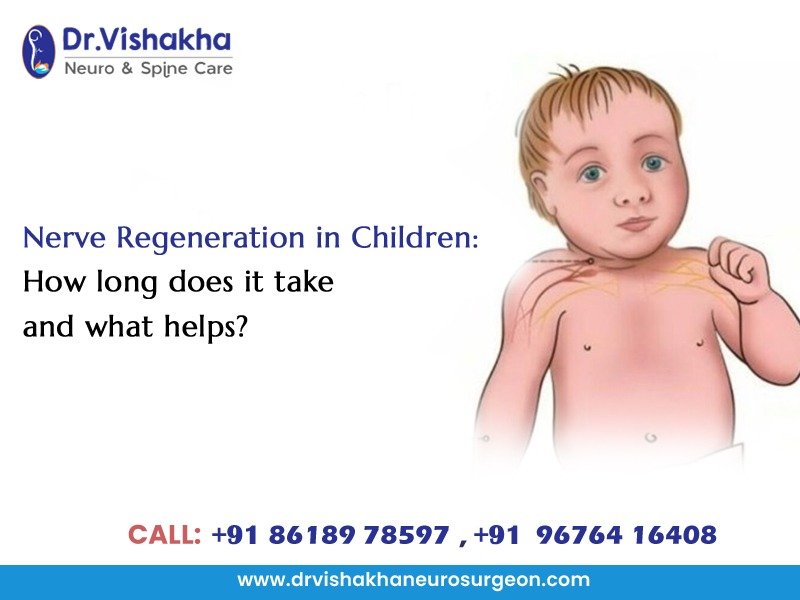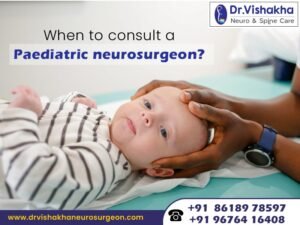Nerve injuries can severely impact the human nervous system, which transmits signals between the brain, spinal cord, and body. Children have a remarkable capacity for recovery due to their growing and adaptive nervous systems. The timeline for nerve regeneration depends on factors such as injury type and severity, nerve location, patient’s age, and overall health. Modern medical advancements offer several approaches to facilitate and strengthen this process. This essay provides an overview of the typical timeline for nerve regeneration and outlines the factors and treatments that can help.
Factors That Influence Nerve Regeneration in Children
This essay explores the biological, environmental, and clinical factors that influence nerve regeneration in children, which is generally more successful than in adults. It highlights that not all children recover at the same rate or with the same outcomes. Understanding these factors can help parents, healthcare providers, and therapists support a child’s recovery more effectively.
- Age significantly impacts nerve healing in children, with younger children having higher neuroplasticity, faster cellular activity, and increased growth factor production. In comparison, older children’s recovery from nerve injuries is slower and less complete.
- Nerve injuries are categorized into mild, moderate, and severe types. Mild injuries are temporary, healing within weeks; moderate injuries damage nerve fibres but preserve the outer sheath; and severe injuries require surgical repair and prolonged rehabilitation.
- The location of an injury significantly affects regeneration time, as nerves regenerate at a rate of 1 millimetre per day. Hence, injuries farther from the target muscle or skin area take longer to heal.

- Early diagnosis and treatment are crucial for reducing nerve tissue damage, improving surgical repair chances, and initiating rehabilitation therapy to prevent muscle atrophy and joint stiffness. At the same time, delayed intervention can lead to poorer functional outcomes.
- Surgical nerve repair is crucial for regeneration, with success influenced by factors like technique, repair type, surgeon experience, and medications like Vitamin B12 or nerve growth stimulators. Microsurgical precision enhances outcomes.
- Rehabilitation and physical therapy are vital for maintaining joint and muscle function, training the body to use regenerating nerves, and preventing disuse, with frequency, consistency, and quality significantly influencing recovery outcomes.
- Nutrition is crucial for healing, particularly nerve repair, and includes essential nutrients like Vitamin B1, B6, and B12, Omega-3 fatty acids, protein, and iron for tissue repair and oxygen transport.
- Emotional well-being and family support are crucial for children’s recovery, as motivated and emotionally supported children engage better in therapy, recover more confidently, and receive educational accommodations.
- Chronic illnesses, genetic conditions, and infections like viral neuritis can hinder nerve regeneration, causing delayed or incomplete recovery in children with diabetes, autoimmune diseases, or neuromuscular disorders.
Diagnosis and prognosis
Diagnosis
- To accurately diagnose a nerve injury, the initial step involves taking a thorough clinical history and performing a physical examination. Symptoms include weakness, numbness, tingling, pain, or inability to move a limb.
- Physical signs include muscle wasting, reduced reflexes, or abnormal posture. During a neurological examination, doctors evaluate muscle strength, tone, coordination, sensory function, and reflexes.
- Electrophysiological tests measure nerve and muscle function, such as nerve conduction studies (NCS) and electromyography (EMG), to detect nerve or muscle damage.
-

- Imaging techniques such as MRI, ultrasound, and CT scans give us precise, detailed pictures of nerves, the spinal cord, and surrounding soft tissues. Ultrasound is useful for visualizing superficial nerves, especially in infants, and CT scans are sometimes used in trauma cases to assess bone injuries that might compress nerves.
Prognosis
- Factors influencing a child’s recovery from nerve injuries include age, type of injury (neurapraxia, axonotmesis, or neurotmesis), location of the injury, treatment timeline, and associated injuries or conditions.
- The expected recovery time ranges from a few weeks for mild injuries to several months or years for severe or long-distance nerve damage. Functional recovery may take longer than nerve regrowth alone.
- The long-term outlook for children with nerve injuries varies, with most showing significant improvement with early intervention and therapy.
- However, some may experience residual weakness, chronic pain, surgical correction, assistive devices, or psychosocial impacts due to limited mobility or school participation.
- With supportive care, even children with partial recovery can lead active and fulfilling lives.
Nerve regeneration in children is a promising field with a greater potential for full recovery than in adults. With timely diagnosis, proper medical treatment, rehabilitation, and supportive care, many children can regain normal function after a nerve injury. As research advances, newer therapies may offer faster and more effective recovery options, giving children the best chance at healing and leading healthy, active lives. Children have a remarkable ability to heal and recover from nerve damage, influenced by the unique biological characteristics of the developing nervous system. Successful recovery depends on a combination of early diagnosis, appropriate treatment, rehabilitation, and emotional support. As medical science evolves, even more effective and faster nerve regeneration strategies may become available, offering brighter futures for children affected by nerve damage.
About Dr Vishakha :
Dr Vishakha Basavraj Karpe is a highly skilled senior consultant at Rainbow Children’s Hospital in Banjara Hills and Hydernagar Hyderabad. She is known for her comprehensive care approach and is one of the few dedicated leading paediatric neurosurgeons in the city and India with over ten years of extensive experience in pediatric neurosurgery. Her expertise includes treating hydrocephalus, spinal dysraphism, craniosynostosis, paediatric brain infections, brain and spine tumours and stroke surgery. She has a special interest in craniosynostosis surgery, which is done only in very few centres in India.
Proficiency of Dr Vishakha:
-
- Hydrocephalus (increased fluid in the brain): The procedure involves an endoscopic third ventriculostomy and CSF diversion (VP shunt) to treat complex hydrocephalus.
- Craniosynostosis (abnormal head shape due to untimely cranial sutures fusion) surgeries: Helmet therapy is a technique that is used in both endoscopic and open surgery.
- Spinal dysraphisms(Spina Bifida)- (spinal abnormalities present by birth) – surgical repair
- Encepahaocles repair surgery.
-
- Vascular conditions and stroke surgeries: revascularization surgeries for moya moya disease.
- Pediatric brain and spine tumour surgeries.
-
- Pediatric brain and spine infection surgeries: Endoscopic and open surgeries for brain and spine infections.
- Pediatric traumatic brain and spinal injury.
- Antenatal counselling for congenital fatal neurosurgical conditions.





